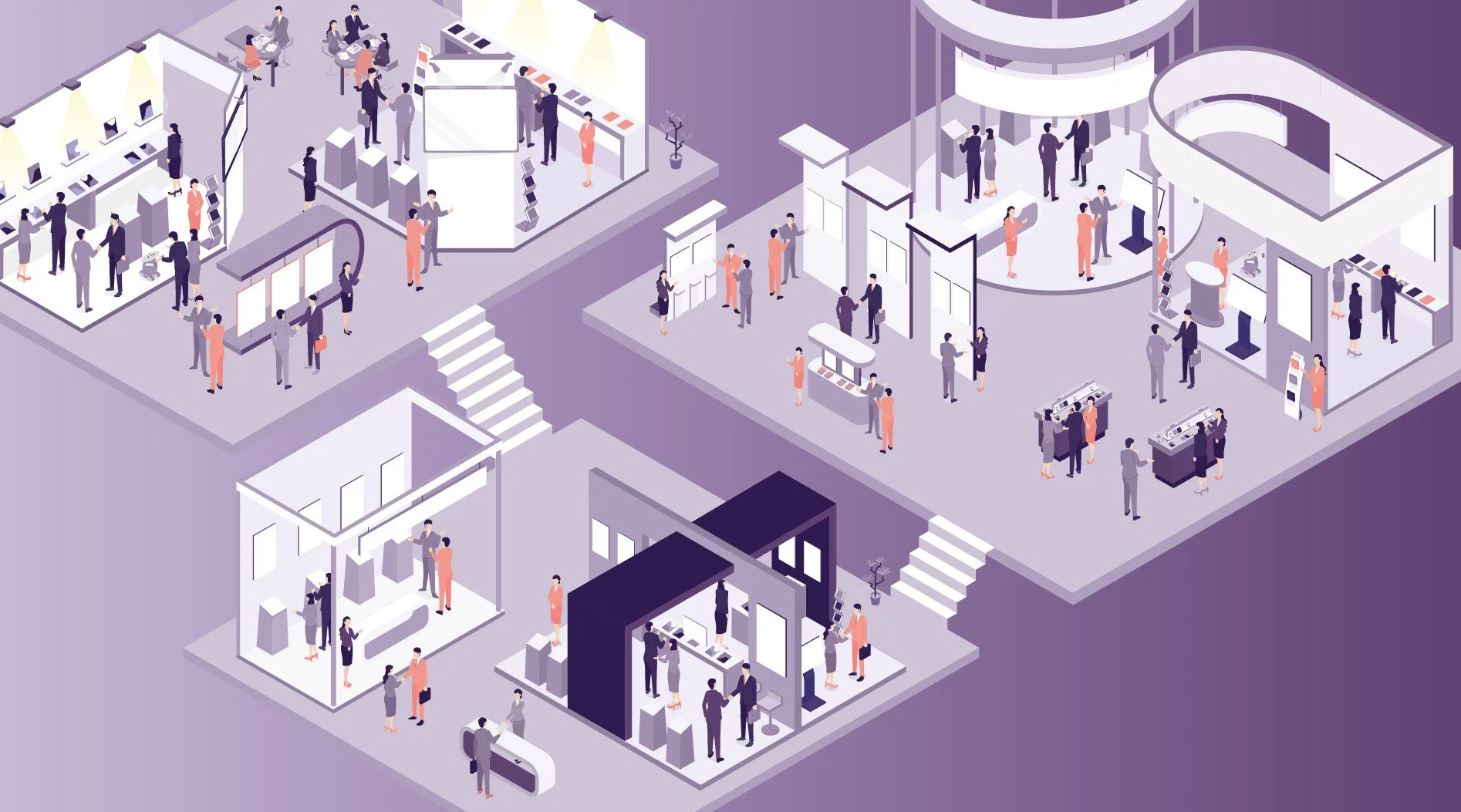Attracting HCPs to Your Conference Booth
Tech-Enabled Strategies for Medical Affairs
For Medical Affairs teams, engaging healthcare providers (HCPs) at medical conferences and congresses can feel a bit like trying to catch butterflies in a tornado; swept up in a whirlwind of new data, studies, presentations, and competing conversations, physicians visit most booths for just a few fleeting moments before fluttering along to the next.
If we could place tracking devices on attendees to monitor their movements across the exhibit hall floor, I suspect we'd find two things: 1) they come and go in abrupt waves (so make sure your team is ready!), and 2) they distribute their attention span in highly uneven ways, with some 20% of booths capturing 80% of physician mindshare. A distinct divide emerges between the teams that, like magnets, repeatedly draw HCPs into their booths and those that disappear into the backdrop. Most Medical Affairs leaders we speak with are acutely aware of these challenges and face the herculean task of ensuring their organization consistently lands in that top 20%.
The innovative use of interactive and experiential technology can turn the odds in your favor. Studies find that physicians are highly receptive to and interested in exploring new technology, are most likely to list "visual" as their preferred learning style, and enjoy gamification and competition. This article explores how we've helped Medical Affairs teams tap into these propensities to drive steadier HCP traffic at annual conferences, congresses, and symposiums.
Prioritizing High-Quality Education
We advise all our Medical Affairs clients that providing high-quality educational content should be the principal objective for any interactive or experiential conference booth activation. Emerging technology can draw HCPs in, but keeping them engaged and curious to learn more requires a prolonged digital interaction that sparks scientific dialogue. Gimmicky, attention-grabbing tactics that aren't directly connected to your organization's research or therapeutic expertise may initially draw a crowd but do little to advance your clinical message; they may even undermine the value of Medical Affairs or damage your organization's reputation. Physician advisors can be helpful sounding boards to ensure content is relevant and resonant before unveiling it to the broader practitioner community.
Communication Technologies to Consider
There are multiple factors to consider when determining the best-suited technology for your conference, including scientific message type, regulatory constraints, specialty area, physician personas, physical booth space, budget, and timeline. Here we explore just a few of the 15+ technology platforms we've deployed in conference settings over the years, along with strengths and limitations for each:
Touchscreens: Generally more straightforward to implement, touchscreens are intuitive for HCPs and can transform static research papers and clinical trial data into a more engaging format for interactive learning. Consider large-format touchscreens for major events and smaller devices like iPads for smaller regional conferences.
Gamified Competitions: Many HCPs are naturally competitive and love demonstrating and testing their knowledge through digital quizzes, puzzles, and games. Familiar input devices such as PlayStation controllers can make experiences more inviting, and prominently displayed leaderboards can encourage HCPs to return later to check on and defend their high scores.
Virtual Medical Science Liaisons (MSLs): Physicians can interact with AI-powered, holographic MSLs to experience instant, personalized conversations when human representatives are unavailable. Consider constraining conversations to a pre-populated bank of approved questions and responses to ensure strict regulatory compliance.
Virtual and Augmented Reality (VR/AR): By immersing physicians in your science, VR and AR can make disease-state or mechanism-of-action (MOA) education more memorable than traditional video or print materials. In loud, distracting conference environments, VR provides the distinct advantage of temporarily blocking out all surroundings, delivering undivided audience focus for the full duration of the learning experience.
How to Measure Success
While traffic throughput at your booth is the most immediate success indicator, several other metrics can also help gauge the overall effectiveness of your interactive and experiential content:
Visit Duration: The more time HCPs spend at your booth, the higher their engagement. For many clients, we've seen interactive content triple or even quadruple average visit length compared to prior years.
Repeat Visits: HCPs will routinely return to a booth day after day if a content asset is engaging enough or part of a gamified competition. Better still is when they return with peers or colleagues from their practice or clinic.
Follow-On Conversations: HCPs are generally more willing and interested to converse immediately following an in-booth digital experience. MSL teams should be trained to promptly engage HCPs in further conversation upon completing interactive learning content.
Follow-Up Actions: We always advise providing a path for HCPs to continue exploring content after the conference through downloadable resources, web-based versions of the event content, or other omnichannel scientific communication strategies. In addition to enabling further at-home learning post-conference, HCPs can share information with colleagues and peers who were not in attendance.
Where to Begin:
A potentially overwhelming array of options come with the expanding range of digital communication technologies available to Medical Affairs teams. Ideally, booth planning begins early, and teams have ample time to refine content through input from cross-functional peers and advisory boards before they debut at a conference. For more time-crunched organizations, our Concept Discovery Sprint can be an effective way to rapidly explore multiple potential medical content tactics before narrowing in on the most likely to deliver impact. To learn more about this process, about other technologies to consider, or to review specific case examples, schedule an introductory call with our Client Services team.

